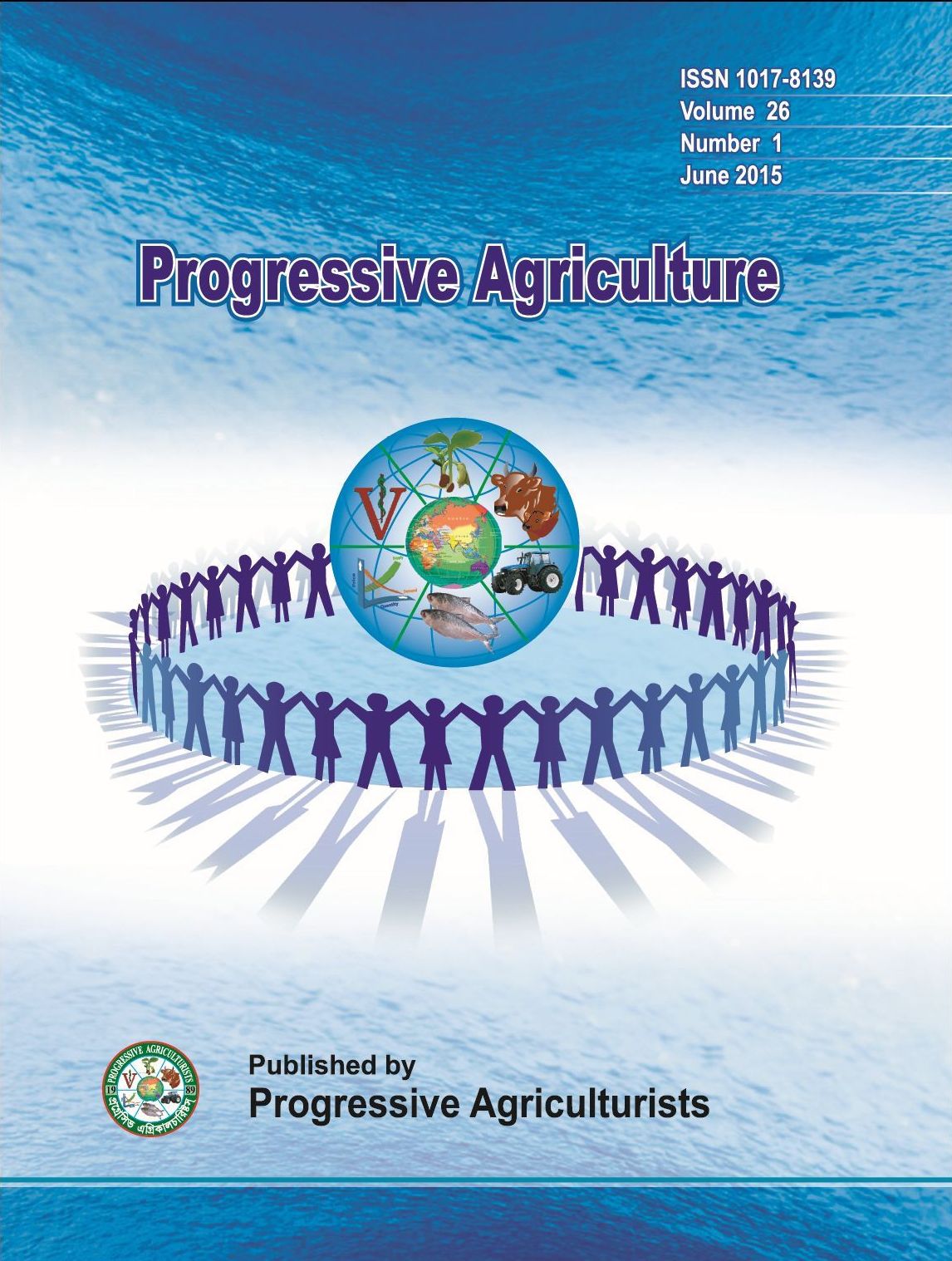Rice crop residue management and its impact on farmers livelihood - an empirical study
DOI:
https://doi.org/10.3329/pa.v27i2.29330Keywords:
Crop residue, asset pentagon approach, farmers livelihoodAbstract
The study aimed to examine the present status of rice crop residue management and its impact on farmers livelihood covering two sub-districts in Mymensingh district of Bangladesh. A total of 100 farmers (50 for crop residue practicing farmers and 50 for the farmers involved in traditional farming) were selected randomly for data collection. A combination of descriptive, statistical and mathematical techniques were applied to achieve the objectives and to get the meaningful results. The results of descriptive statistics showed that retention was found higher in far distance plots from homestead. No retention of crop residues was found in case of Aus and Aman rice. The whole retention was found only in case of Boro rice. The shortage of labour in season and the wage rate were also important factors for the retention of crop residues. However, farmers perceptions about the use of crop residues were mostly adding organic matter to the crop field followed by mulching and feeding animal. The recycling of resources among crop retention and livestock has the great potential to return a considerable amount of plant nutrients to the soil in the rice based crop production systems. Due to crop residue practices, crop and livestock both were benefited through resource interdependences. The sampled farmers were benefited from retention of crop residues by improving soil quality, soil moisture, etc.; and farmers used less amounts of fertilizer, irrigation water, etc. for the succeeding crops. Consequently, succeeding crop productivity, profitability and annual income were increased significantly. The result of logit regression model shows that age of household head, farm size, agricultural income and non-farm income were found as significant variables in explaining the variation in crop residue adoption of farm households. To assess the livelihood pattern of sample farm households through asset pentagon approach, noteworthy improvement was found s on different capitals. The study identified some problems regarding crop residue management and finally, recommended that if the farmers get proper training for such management, it would be helpful to improve their livelihood.
Progressive Agriculture 27 (2): 189-199, 2016
Downloads
165
228

